Ethnic groups step in as Myanmar’s COVID response falls apart
Some ethnic organisations are continuing testing and vaccinations in the mainly border areas under their control.
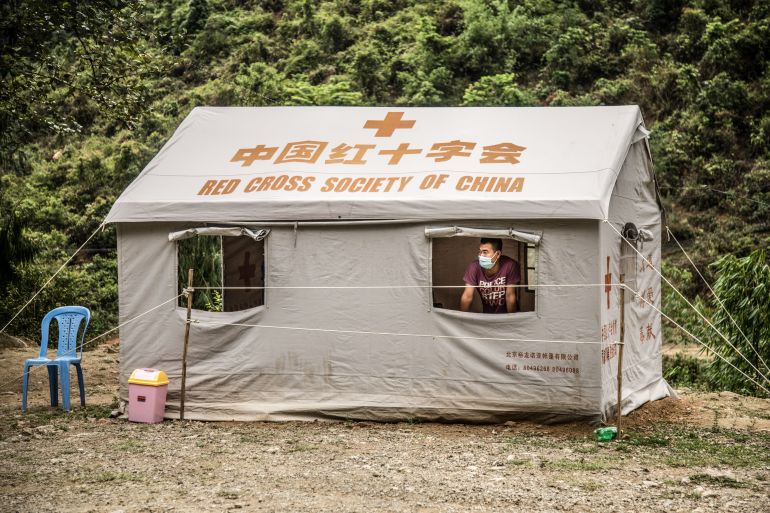
As Myanmar’s national COVID-19 response collapses following a February 1 military coup, one ethnic armed organisation in the country’s north has quietly vaccinated 20,000 people in areas it governs, with support from across the border in China.
The vaccines, produced by the Chinese company Sinovac Biotech, were supplied and administered with assistance from the Red Cross Society of China, a member of the International Federation of Red Cross and Red Crescent Societies.
Keep reading
list of 4 itemsMyanmar military designates shadow gov’t as ‘terrorist’ group
Myanmar’s anti-coup bloc to form a ‘defence force’
More than 200 NGOs call on UN to impose Myanmar arms embargo
The KIO is one of approximately 20 ethnic armed organisations operating along Myanmar’s borders with China, Thailand and India. Several of them have run their own COVID-19 responses from early on in the pandemic.
Although the turmoil and intensifying civil war since the coup have disrupted their efforts, the KIO and Karen National Union (KNU), two of the country’s most well-established ethnic armed organisations, told Al Jazeera that they were continuing as much as possible.
Their ongoing COVID-19 responses come as Myanmar’s national healthcare system – already one of the weakest in the world before the coup – falls apart. Days after the coup, government health workers initiated a Civil Disobedience Movement, which has now swept the country, in an attempt to paralyse military rule and starve the generals of resources. Many hospitals are closed or barely functioning.
On May 5, the United Nations in Myanmar warned that attacks on medical personnel and facilities were jeopardising the COVID-19 response.
“At a time when Myanmar needs them the most, health workers fear arrest or detention for exercising their rights to freedom of expression and peaceful assembly,” it said in a news release.
According to the UN, the military has committed at least 158 attacks on medical personnel and facilities, in which more than 60 people have been injured or killed. Additionally, it has arrested and charged more than 139 doctors and occupied at least 50 health facilities.
Dr Khin Khin Gyi, head of the health ministry’s infectious diseases unit, told Voice of America in early April that national testing rates had fallen to less than 2,000 a day, from as many as 25,000 daily tests before the coup.
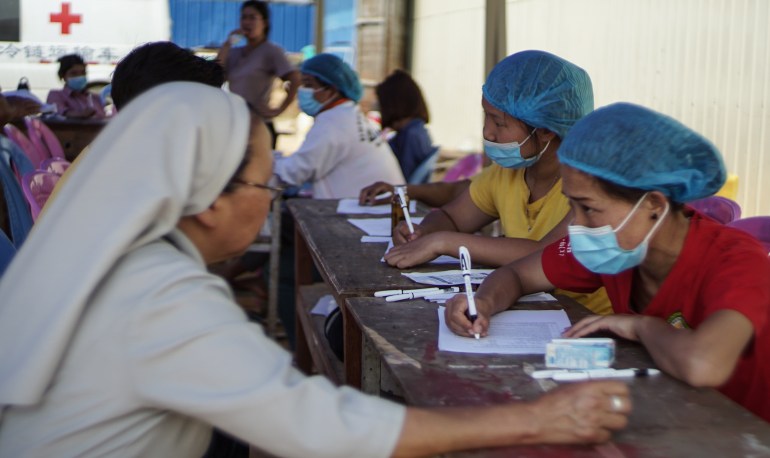
Reported cases have subsequently plummeted.
As of January 31, the country had documented more than 140,000 cases and 3,131 deaths, and was reporting hundreds of new cases daily. Since the coup, however, only 2,700 new cases – averaging about 30 a day – and 79 deaths have been announced.
‘Perfect storm’
The International Federation of Red Cross and Red Crescent societies warned in an April 1 statement of a possible “perfect storm” in which a coronavirus outbreak could coincide with the country’s ongoing humanitarian crisis. Although no outbreak has been detected in Myanmar since the coup, India and Thailand are currently experiencing major new waves of the virus.
On Myanmar’s southeastern border with Thailand, the KNU, which was established in 1947 and joined a Nationwide Ceasefire Agreement in 2015, has operated a Pandemic Emergency Response Team across its seven districts since March 2020.
According to Saw Diamond Khin, who heads the KNU’s Karen Department of Health and Welfare, testing capacities are limited – up to 18 tests a day, and only at one location – but of those tested, only three cases have been identified since the beginning of the pandemic.
He told Al Jazeera that population movement had been minimal until the coup. “People have not travelled much during the pandemic except for to and from their farms. Our area is mountainous; people only leave the village to buy items like salt.”
The coup, however, has dramatically increased movement into KNU areas.
In February, the KNU offered anti-coup protesters its protection, and thousands of dissidents and striking government workers have since sought shelter in its territory. Others are arriving from cities to train to take up arms against the military.
“Before the coup, communities lived separately. We didn’t cross from one village to another. Now, people are running here and there,” said Saw Diamond Khin. “The main thing is that people from cities are coming to us. We register them first and send them to a quarantine centre.” Air raids and escalating clashes have also forced at least 40,000 civilians from their homes, many of whom are hiding in the jungle.
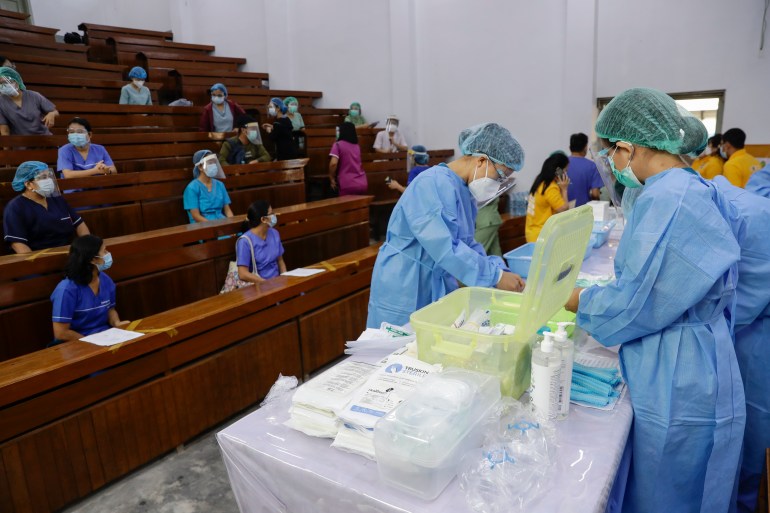
Myanmar’s elected government began vaccinating people just five days before the coup, using the Oxford-AstraZeneca vaccine donated by India. It had set a target of reaching 40 percent of the country’s 54 million people by the end of the year.
As of April 23, the military-controlled media reported that more than 1.5 million people had received the first dose, but only 300,000 people had received the second one. Many people, including striking healthcare workers in hiding for fear of being arrested, have boycotted the second dose, leaving 1.6 million unused doses of the vaccine, according to BBC Burmese.
In a May 6 statement, the Ethnic Health Committee, an alliance of ethnic health organisations across Myanmar, described a “growing health emergency” in ethnic areas since the coup.
It called for increased international support to ethnic health organisations and civil disobedience movement participants carrying out health services outside of the military rulers’ health structures, and for neighbouring countries to allow COVID-19 vaccines into ethnic areas “as a humanitarian gesture as well as to protect their own populations from the pandemic.”
Saw Nay Htoo, a spokesperson from the committee, told Al Jazeera that even before the coup, the military was actively working to dismantle COVID-19 responses in ethnic areas, but now, the regime’s restrictions on mobile data and communications networks have further hindered ethnic health organisations’ efforts. Although many health workers have fled central Myanmar for ethnic areas, funding and medical equipment are in short supply.
“The whole health operation nationally has been disrupted,” he said.
China border
The KIO, which has been fighting for self-determination since 1961, maintains territory adjacent to China’s Yunnan Province. Like the KNU, it runs its own governance system in its territories.
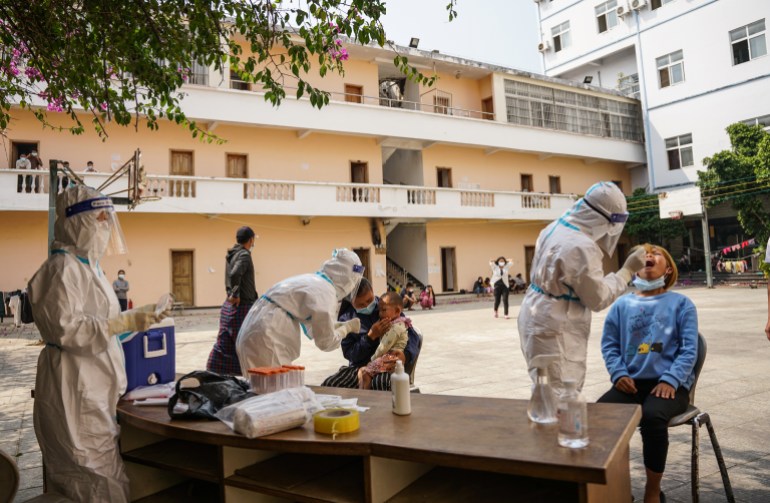
Since a ceasefire agreement with the military collapsed in 2011, fighting has displaced more than 100,000 people, of whom 39,000 live in areas under KIO control. The conflict had quieted down from 2018, leading some displaced people to return home, but since March, fighting has reignited. At least 5,000 civilians have fled their homes amid daily clashes and air attacks.
The KIO began its COVID-19 response in early February 2020, more than a month before Myanmar announced its first coronavirus case, and began testing in April using kits donated from China and Singapore.
It can now run up to 600 tests per day and has tested more than 10,000 people in its territories, of whom only 20 were positive cases; none were internal transmissions, according to Hing Wawm, who heads the KIO’s COVID-19 response committee.
He told Al Jazeera that the committee has continued without interruption since the coup, but is no longer able to establish checkpoints to monitor movement in areas affected by conflict or to coordinate with hospitals outside its territory.
The vaccination of people in KIO-controlled areas, which was offered to all people between the ages of 18 and 60, coincided with what Chinese state media called a “massive vaccination drive” in four counties and cities of Yunnan Province which border Myanmar, during the month of April.
The drive was sparked by the first outbreak in China since February, in the border city of Ruili, where on March 30 and 31, China’s National Health Commission identified 60 positive cases, including 16 Myanmar nationals.
Some 17 million crossings took place between Ruili and the city of Muse in Myanmar’s Shan State in 2019, but Yunnan province has banned arrivals from Myanmar since early on in the pandemic.
Ruili authorities appear to have stepped up border patrols since the coup, deploying more officials and state-sector workers to the area, according to The Economist Intelligence Unit.
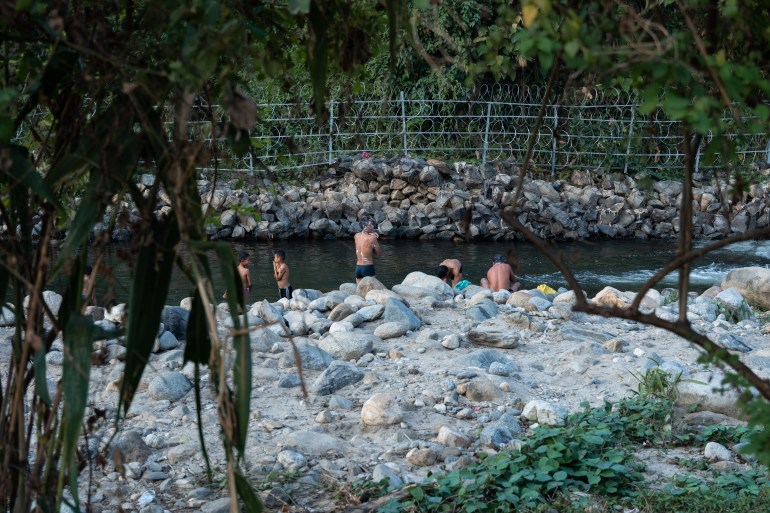
Hing Wawm of the KIO told Al Jazeera that the Red Cross Society of China had donated approximately 15,000 vaccine doses so far and that the vaccine would be offered to the entire population in KIO-controlled territories when more shipments arrive. Volunteers from the Red Cross Society of Longchuan County, located across the Kachin State border in Yunnan Province, administered the vaccine.
A community leader in Nhkawng Pa, one of 18 camps for conflict-displaced people in KIO-controlled areas, told Al Jazeera that initially, some camp residents were hesitant about the vaccine, but after getting information from KIO health volunteers, most eligible residents in the 1,600-person camp agreed to get the shot.
But a resident of Woi Chyai camp, home to 7,500 people, said she and many others were still holding out. “I didn’t receive a COVID-19 vaccine yet because [the KIO] said it was donated from China and doesn’t yet have WHO approval. They also said that they were testing it on us,” she told Al Jazeera.
CoronaVac, an inactivated virus vaccine, has undergone phase-three clinical trials in countries including Brazil and Indonesia and has been administered more than 260 million times around the world.
The WHO is reviewing its possible approval for use worldwide with a decision expected as early as this week.
China and Chinese-backed businesses have long exploited land and natural resources in Myanmar.
Since the coup, as China uses its UN Security Council veto power to block actions against the generals who seized power from the elected government, negative feelings among the Myanmar public towards China have only grown.
At the beginning of May, China’s military donated 500,000 doses of its vaccine to the military, in a demonstration, according to the Chinese embassy in Yangon, of the two countries’ longstanding pauk-phaw (fraternal) relationship.